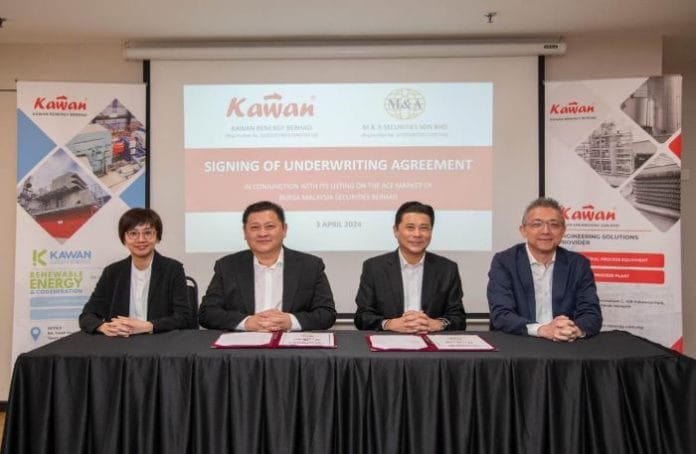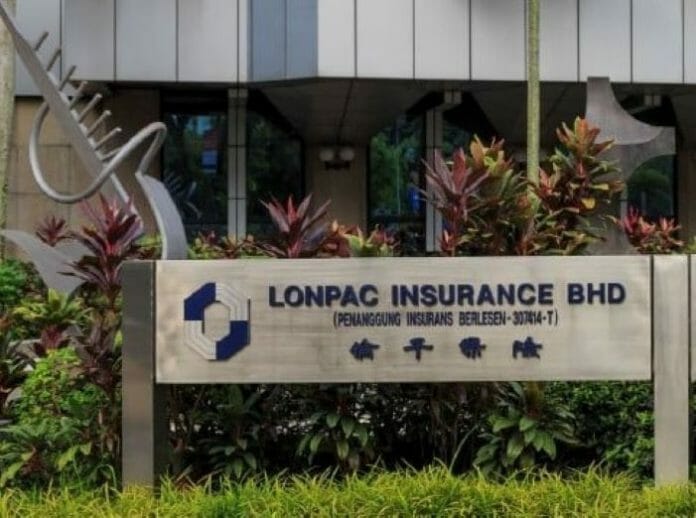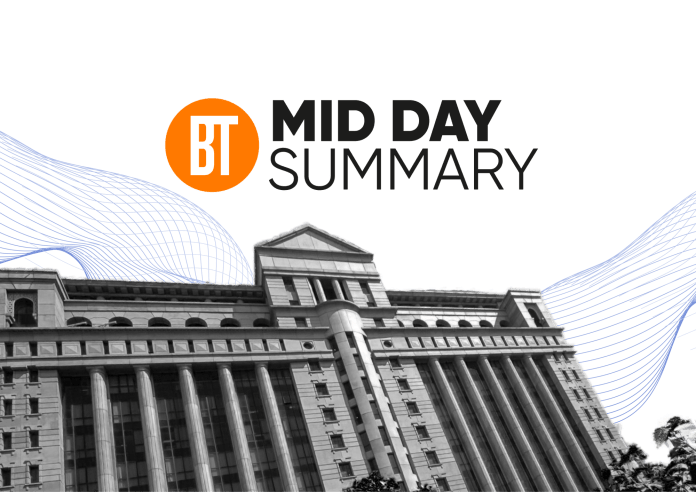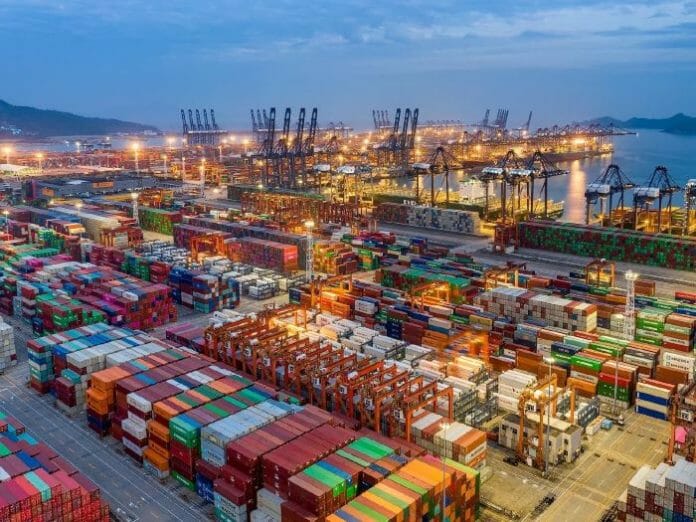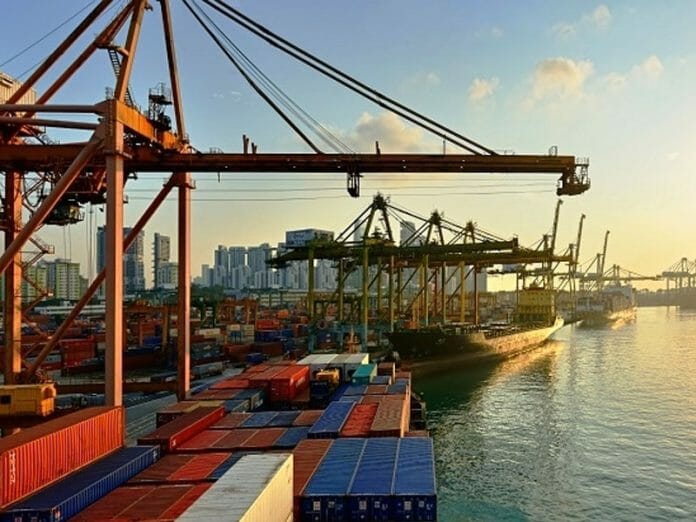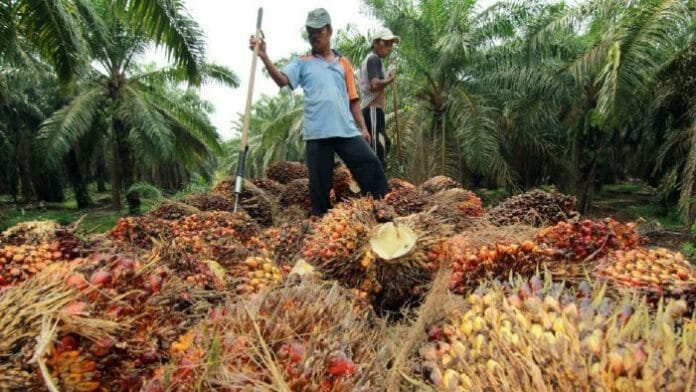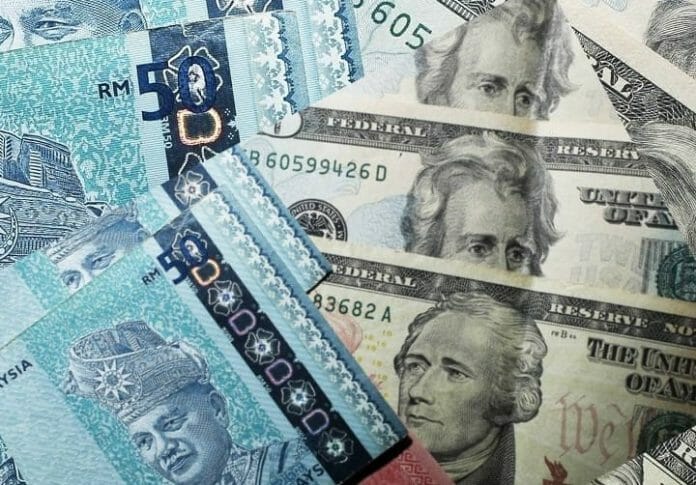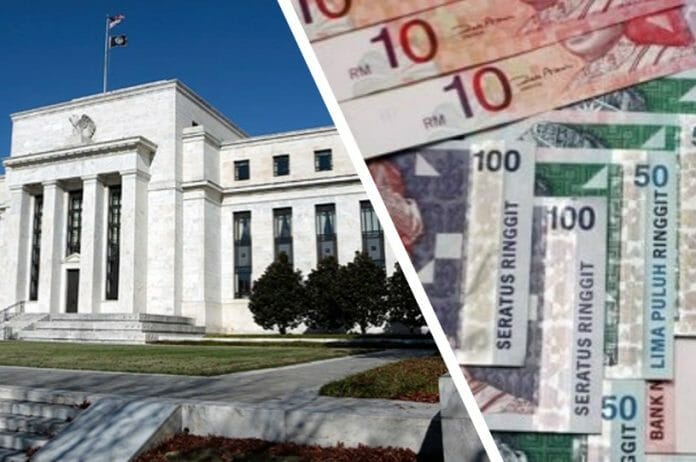Recent data releases have led to a great shift in the market expectations on the US Fed’s future policy direction as the Fed is now expected to maintain its restrictive policy for a longer period.
This has led to a recalibration of the market outlook on policy rates. While for the moment it has not been in the direction of the US interest rate but more on the timing of the cuts. Nevertheless, there have been segments that are now looking for US interest rates to remain at current levels for this year (i.e. no cuts).
Impact to Malaysian financial markets and Ringgit
MIDF Research said today (Apr 29) that while US interest rate decisions may not have a direct impact to the Malaysian economy but being the largest economy in the world, any decisions by the Fed will have global repercussions.
MIDF believes its impact to global economy will be through the effect it has on US consumer spendings and as extension the global trade. Meanwhile, interest rate differentials will be a factor in currencies’ outlook vs. the USD, and as such possible interest rates decisions by other central banks. As for the equities market around the world, it will have an impact on investors’ valuation analysis, sentiment and global economy outlook.
Any re-evaluation to MIDF’s outlook?
When MIDF released its 2024 outlook titled “Cruising Along”, the main premise for this year was that the Fed will begin to cut the federal fund rate starting from early 2HCY24 with 3 cuts. Based on the latest developments, this has been revised to cuts beginning in 4QCY24 and with the possibility of 1 cut only.
However, despite this the house believes that the underlying premise for the outlook remains unchanged, albeit with some tweaks to its expectations for currencies and MGS market.
Economics
Central banks to cut policy this year. Major central banks are expected to begin reducing interest rates this year as inflation has been trending lower from the recent multi-year high peaks. This will be a reversal from the policy tightening carried out previously to contain high inflation during the early period of post-pandemic recovery.
At the same time, the policy easing will also help to support economic growth particularly as growth outlook in the advanced economies is expected to slow this year because the high borrowing costs would constrain aggregate demand. However, recent data releases have led to a great shift in the market expectations on the US Fed’s future policy direction.
Continued resilience in US consumer spending. American consumers continued to increase their spending in 3MCY24. The pace of growth also remained encouraging, defying market expectations for slower rise in consumption spending. Retail sales rose faster at +4%yoy in Mar-24 (Feb-24: +2.1%yoy), the fastest growth in 3 months. The monthly increase of +0.7%mom in Mar-24 retail sales was better than +0.3%mom predicted by the market consensus. Although the sales growth in 3MCY24 was not as fast as the previous 3 months (1QCY24: +2.3%yoy; 4QCY23: +4.1%yoy), private consumption expenditures largely remained as the key growth driver, contributing a large part to the US GDP growth in 1QCY24 mainly on the back of increased consumption of services.
Still robust US job market. The US job market remained strong, although the recent condition was not as tight as seen previously during the first couple years of post-pandemic recovery. The rebalancing in the labour market has seen the labour demand to correct, with the number of job openings declining to 8.76m as of Feb-24.
When the Fed started tightening its monetary policy back in Mar-24, total number of job openings was at its peak of 12.18m. The adjustment in the job market also saw the unemployment rising slightly to 3.9% in Feb-24 from 3.4% in early 2023. Recent data update, however, pointed to continued strength in the US job market as the jobless rate fell slightly to 3.8% in Mar-24 with a stronger-than-expected increase in the nonfarm payrolls by +303K, which was the highest monthly increase in 14 months.
There was no sign of deterioration in the job market as new filings for unemployment benefits remained relatively low, averaging at 210K a week so far this year until mid-Apr-24 (2023 average: 222.8K per week).
Weaker-than-expected US GDP growth in 1QCY24… The US GDP growth moderated to an annualised +1.6%qoq in 1QCY24, marking the slowest expansion since 3QCY24. Despite the stronger-than-expected retail sales in Mar-24, private consumption expenditures (PCE) recorded slower growth of +2.5%qoq (4QCY23: +3.4%qoq). However, the sustained growth makes the PCE to be the main contributor to growth during the quarter, adding +1.64%-point to the overall growth.
Stronger imports also caused net exports to be a downward drag, slashing -0.86%-point from growth. Another drag also came from a further reduction in inventory investment, taking away an additional -0.35%-point from the GDP growth.
Apart from the sustained growth in PCE, stronger investment contributed +0.91%-point to the 1Q growth with stronger investment spending in the residential market.
While the slower growth in spending may compel the Fed to consider cutting rates soon, but we view there is continued strength in consumer spending, albeit at more moderate pace, and this also led to the stronger imports in 1QCY24.
Without a clear sign of deteriorating demand, MIDF believes the Fed will maintain its cautious approach not to cut too soon as inflation remains above the Fed’s 2% target.
…no hard landing in 2024 with growth forecasts upgraded. The expectations for hard landing have diminished given the still robust growth in 1QCY24. Although the quarterly growth was not as fast as expected, from the year-on-year perspective the US economic growth only moderated to +3%yoy (4QCY23: +3.1%yoy).
Even if MIDF assumes US GDP growth were to grow at a more moderate pace of annualised +1.0%qoq in the next 3 quarters, the full-year 2024 growth could still be at around +2.1%. Alternatively, if the level of activity were to remain at the same level as in 1QCY23 (i.e. zero growth in the coming quarters), the GDP for the whole 2024 would be at +1.8%, still not too far from the normal growth range. Given this resilience, there was an upgrade to the US GDP growth forecast for 2024.
The IMF, for example, now predict the US to grow at +2.7% this year, an upward revision from +2.1% predicted in the Jan-24 World Economic Outlook. Even the Fed policymakers upgraded the US GDP forecast to +2.1% at the FOMC meeting in Mar-24 (previous forecast in Dec-23: +1.4%). If the US economy managed to grow at around +2.0% this year, the growth will be at more normal levels albeit moderating from +2.5% last year.
US inflation remained above-target and sticky. Apart from the resilience in the broader economy, price developments continued to show the rate of inflation remained above the Fed’s longer-term target.
Even the reading looks stickier, leading to assumptions the disinflation towards +2% will take some time. The core CPI inflation, for example, was unchanged at +3.8%yoy in Mar-24, against market expectations for further moderation towards +3.7%yoy. Thus far, the core CPI inflation has been moderating from the recent peak of +6.6%yoy in Sep-22, which was the highest reading in 4 decades. The core PCE inflation, the Fed’s preferred inflation measure, also shows the same trend, remaining unchanged at +2.8%yoy in Mar 24 from the peak of +5.6%yoy in Feb-22, a multi-year high last seen in early 1983.
Pushing rate cuts expectations to latter part of 2HCY24. Inflation outlook will continue to be the main consideration to keep the high interest rates. From the recent updates, the inflation outlook for 2024 will remain elevated mainly due to increases in service charges such as housing costs and automobile insurance. If the price trend for the rest of the year were to be similar as recorded in the past few months, the core PCE inflation could remain around +2.8%yoy in Dec-23.
While the average core PCE inflation is projected to ease to +2.6% this year (2023: +4.1%) based on the FOMC projection, this signals the US inflation will take time to moderate further to the Fed’s +2% target. Based on the recent price developments and overall economic resilience, we predict the rate cuts will likely be in the latter part of 2HCY24 no longer as early as mid-year as we projected previously.
No cuts if inflation appears persistently sticky or accelerates. As the Fed keeps to its mission to bring down inflation, any risk of inflation accelerating back to higher levels will not only reduce the likelihood of rate cuts, but such a scenario will cause the Fed to shift back to a more hawkish mode. If the core PCE inflation were to increase in the coming months, this would also indicate strong demand pressures on prices.
Reading from the Fed Chairman’s message after the recent FOMC meetings, we conclude that the Fed would not hesitate to maintain its restrictive policy stance for an extended period. Several times Chair Powell mentioned that the Fed may be forced to tighten its policy even further if inflation reverts to higher levels.
At this point, we foresee there will be at least 1 rate cut this year in anticipation of slowing US growth as the aggregate demand will eventually be constrained by the high borrowing costs. However, an upside risk to the US inflation outlook could push the timing for rate cuts even further and possibly eliminate the chances of any rate cuts this year.
Strategy/Market
The bullish market post-hikes… The US equity market has been on an upward trajectory since November last year. The bullish sentiment was arguably triggered by market conviction that the Fed is done with its aggressive series of rate hikes. The broader S&P 500 index regained its all-time high level in January this year and stride higher thenceforth.
…is sustainable… The prevailing positive market trend was not unexpected in view of the past market behaviour post cessation of aggressive rate hikes. Recall the equity bull-run of 2006/7 in the aftermath of massive rate hikes in 2004/6. In fact, we first highlighted this in our 2023 Market Outlook report (page 17-18) dated 7 December 2022. It is also important to note that, when MIDF looks at empirical evidence, the positive market trend could be sustained for as long as the macroeconomic and corporate earnings performance as well as financial conditions remain positive.
…despite fears of slower economic growth and sticky inflation… A few days ago, the US financial market was quite perturbed by data showing slower-than-expected 1QCY24 economic growth and persistent inflation. This situation is not unusual.
Looking back to 1QCY07, the economic growth began to moderate, and inflation deemed elevated. In its statement dated 21 March 2007, the US Fed commented on growth: “Recent indicators have been mixed and the adjustment in the housing sector is ongoing. Nevertheless, the economy seems likely to continue to expand at a moderate pace over coming quarters.”, and inflation: “Recent readings on core inflation have been somewhat elevated. Although inflation pressures seem likely to moderate over time, the high level of resource utilization has the potential to sustain those pressures.
In these circumstances, the Committee’s predominant policy concern remains the risk that inflation will fail to moderate as expected.”
…which could result in market pullback… The US equity market is currently in a pullback phase arguably reacting to (the situation in the Middle East as well as) the recent economic data on growth and inflation. As of last week’s close, the S&P 500 is -3.1% below its all-time high level registered in late March this year.
…but does not derail its bullish trajectory. As earlier stated, empirical evidence suggests the positive market trend could be sustained for as long as the macroeconomic and corporate earnings performance as well as financial conditions remain positive. Again, looking back to 2007, the equity market peaked only soon before the economy officially entered a recession in December that year.
Hence, MIDF expects the current US market pullback to be transient as its economist, at this juncture, continue to believe the US economy to skirt recession and register positive output growth this year.
FBM KLCI 2024 target remains at 1,665 points. In the local equity market, the FBM KLCI ended last week at its highest since early May 2022 despite worries over slower than expected US economic growth and stickier inflation data. MIDF maintains their FBM KLCI target for 2024 at 1,665 points or PER24 of 14.6x.
Still waiting for the first cut. MIDF believes that it is still a waiting game for the US Fed to deliver its first rate cut as expected by the market. Nevertheless, they are sanguine on the Malaysia’s economic prospects, and they maintain their expectation of the earnings growth potential of corporate Malaysia.
MIDF: A recap of the investment themes for this year:
1. Recovery of trade will continue to be a theme for this year. Given that we expect external trade will see a recovery this year, we opine trade-related stocks such as logistics and ports will benefit from this. Furthermore, we expect freight rates to stabilise after hitting bottom in mid-CY23, coupled with an anticipated recovery in shipment volume due to the current affordability of freight rates.
2. Still the prospect of an upside in the construction sector. The house maintains its view that the 12MP Mid-Term Review (12MP-MTR) has given more prominence to the construction sector. This is based on the planned DEVEX and the expectation that the government will spend circa RM90b per year for the remainder of the 12MP period. Meanwhile, we can expect further upside should there be an announcement on the rollout of large rail projects such as the MRT3, Penang LRT, and the proposed revival of the KL-Singapore High-Speed Rail (HSR).
3. The property continues improving. MIDF is positive about the improving outlook for the property sector amid the downtrend in inventory level of property companies. Besides, unchanged OPR is positive for property companies as that supports recovery in demand for property.
Overall, MIDF expects a further recovery in the property sector in 2024 as buying sentiment on property is expected to remain healthy going forward. New sales of property companies are improving which should translate into better earnings visibility going forward.





